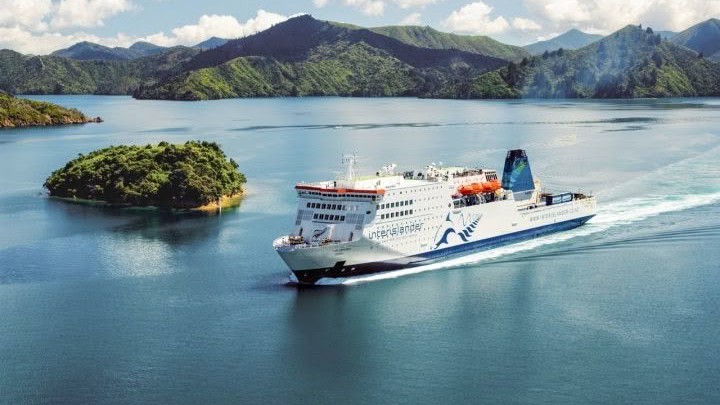
Two new rail-enabled ferries will replace the current fleet of three Interislander ferries, Minister for Rail Winston Peters revealed this week.
Expected by Christmas 2029, the ferries will have road and rail decks that will load rail freight on and off the ships in single shunt movements.
The new ships will be about 200m in length, and about 28m in width. Both ferries will have capacity for 1500 passengers, and have 2.4km of lanes for trucks and cars, with space for 40 rail wagons.
The Government confirmed it will replace infrastructure in Picton, while the infrastructure in Wellington still “has life left in it”, so it will be modified and re-used.
The new plan aims to undercut Labour’s scrapped iRex project, which ballooned from $775 million to approximately $3 billion. Finance Minister Nicola Willis scrapped the iRex deal in December 2023.
The announcement of the new rail-enabled ferries followed the Ministerial Advisory Group advising the Government to buy two road-only ferries, saying it would be cheaper overall.
“Road-only ferries came out as more expensive than buying road and rail ferries,” Peters said.
Labour has criticised the delay in the delivery of the proposed plan, noting that its plan would have had ships on the strait by 2026.
“Winston Peters is shopping for smaller ferries after Nicola Willis torpedoed the original deal, which would have delivered new rail-enabled ferries next year,” said Labour transport spokesperson Tangi Utikere.
“Instead of scoring two ferries for $551 million, Winston Peters has informed us he will progress with two smaller ferries but has no contract, or costs.
“Due in 2029, all we know is that the ferries are smaller than those Winston Peters was involved with negotiating in the first place. That must have been a hard pill to swallow for the Minister for Rail.”
The Transporting NZ 2025 Road Freight Survey revealed the majority of participants believed the delay in replacing the Cook Strait ferries was a major risk for the road freight industry and New Zealand economy.
“The results of the National Road Freight Survey confirm what we’ve been hearing consistently from our members and industry sector groups – the Cook Strait connection is a real priority for the road freight industry,” said Transporting New Zealand advocacy and policy lead Billy Clemens.
“Approximately $30 billion in freight crosses the Strait each year, so it is essential to have a safe and resilient connection between the islands. This is particularly vital for carriers who carry livestock and other time-sensitive freight. It’s also particularly important to the Mainland, with most freight travelling south.
“Transporting New Zealand and our members are looking for the forthcoming announcement to provide certainty around the procurement process, and a timeframe for when we can expect replacement vessels and the necessary landside infrastructure.
“We recently met with Minister Peters, the Minister for Rail, and reiterated our position that competition must be maintained across the Cook Strait connection, there must be capacity for the forecast growth in the domestic freight task, and maintaining the frequency of services must be a priority,” Clemens said.
“Back in June 2024, the Ministerial Advisory Group on Future Ferry Services on the Cook Strait recommended that a contract for new ships be signed by 1 October 2024 at the latest, noting this would mitigate the risk that ‘potentially advantageous options could be taken up by other operators and lost to the Crown while KiwiRail works to settle the HMD [iReX] claim’.
“The road freight industry needs to see some real progress being made on procurement.”
Meanwhile, National Road Carriers Association has welcomed the confirmation that the replacement programme for the aging Interisland fleet is back on track.
“The freight industry has been looking for certainty that reliable connections between the North and South Islands would continue and the plan announced by Minister for Rail Winston Peters provides that,” said NRC GM policy & advocacy James Smith.
“Utilising as much of the existing infrastructure and retaining the ability to move both rail and road vehicles across Cook Strait is a great result for our industry.”
Rail advocacy group the Future Is Rail said rail-enabled ferries were “always a no-brainer”.
“This commitment to rail will give communities and businesses some certainty about future transport links,” said Roger Blakeley, chair of The Future Is Rail.
“It also removes uncertainty around rail and enables KiwiRail to better promote rail freight options.”





